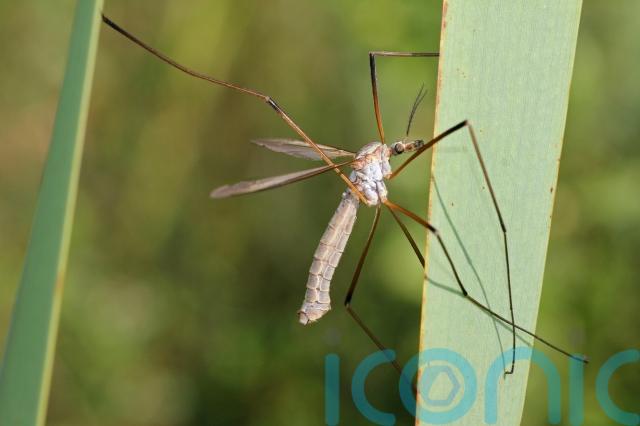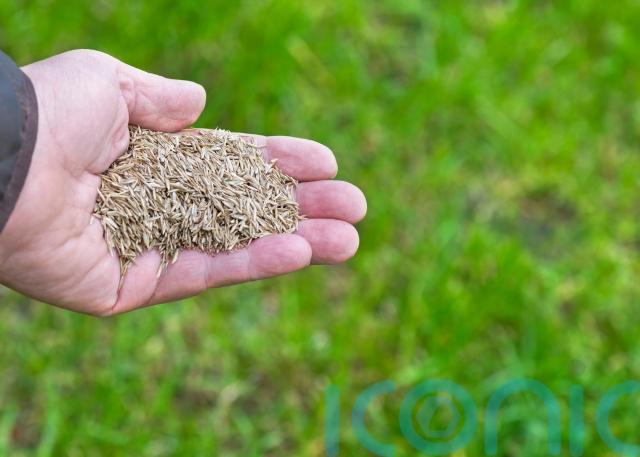
Anyone seen the annual arrival of daddy long legs, or craneflies, in their house of late? They may be a minor irritant in the home, but when they lay their eggs in your grass that can be more of a problem.
This is because the larvae, known as leatherjackets because of their tough, leathery skin, feed underground on stems and roots, which can cause bare patches to appear in your lawn, or attract wildlife such as birds to peck at them, while badgers and moles will cause more lawn damage foraging for them.
There are around 350 species of cranefly in Britain. Adults emerge and lay eggs on the turf from August to October which will hatch a few weeks later, which is when the grubs start to feed on the roots, going under the surface.

“At that stage they are very hungry and depending on the population in your lawn, between November and January or February, you will see either bits of grass dying off in your lawn or birds pecking at it,” says lawn expert David Hedges-Gower, author and chairman of the Lawn Association.
If it’s cold they will overwinter as small larvae and won’t do a lot of damage until mid-summer, but in a mild winter they will continue to feed and can become big enough to cause lawn problems by late winter.
Leatherjackets are often more prevalent after a wet autumn, as damp conditions favour survival of eggs and larvae, according to the Royal Horticultural Society.
Badgers and moles sense movement in the ground and will dig away at your lawn to investigate.
How do you know if you have leatherjackets?
To encourage them out of the lawn, saturate the grass and cover it with black sacks or tarpaulin overnight.
In the morning, the grubs will have risen to the surface and will be easy to see. They can be discarded by picking them off by hand or leaving them exposed for hungry birds.
So, is there anything gardeners can do to minimise the damage the grubs can do and deter their predators from digging up the lawn?
1. Promote movement
2. Get rid of thatch
3. Use different lawn seed
“Rye grass doesn’t have many plants per square metre, so if you have an attack on a rye grass lawn that is already thinning out during winter – which it does – it doesn’t take much for a small leatherjacket infestation to wipe out a rye grass lawn because you’ve literally got a few thousand plants in a square metre, whereas in a traditional lawn (he recommends bent and fescue grass seed), you’ll have 20,000 plants. So an infestation in a natural native lawn probably goes unnoticed,” he explains.
4. Try nematodes
However, Hedges-Gower has reservations about how effective nematodes may be in an uncontrolled environment like the garden, compared with, say, greenhouse conditions.
“A live nematode needs a certain amount of moisture, but not too much, and a certain temperature, not too hot or too cold. They say, wash them in, but you don’t know how far the spread of the grub is. You have to apply them at a certain time.
“When people see daddy long legs flying around, they get the nematodes out, put them on and there’s nothing there to kill. The eggs haven’t even hatched. The application should be done when the larvae have hatched, which is November time, but November’s too cold. The soil’s too cold.”
4. Consider distractions
”A lot of the time the birds sense the movement in the ground and will start pecking for the grubs,” says Hedges-Gower. “They do more of the damage than the grubs themselves, sometimes. Crows, magpies, rooks and starlings will peck small holes in your lawn.”
Badgers will dig up great clumps of lawn to get at the grubs.
He suggests trying traditional bird deterrents like CD cases hanging on a line around the lawn, or netting, anything really that would interfere with the insects re-laying eggs or stop creatures foraging for grubs under the grass.
5. Wait till spring to repair the lawn

“If your lawn is thin it will be sticky and claggy and very cold, so you’ll never germinate anything. Clean up the mess as best you can and prepare for February, March and April time,” he advises.
Subscribe or register today to discover more from DonegalLive.ie
Buy the e-paper of the Donegal Democrat, Donegal People's Press, Donegal Post and Inish Times here for instant access to Donegal's premier news titles.
Keep up with the latest news from Donegal with our daily newsletter featuring the most important stories of the day delivered to your inbox every evening at 5pm.